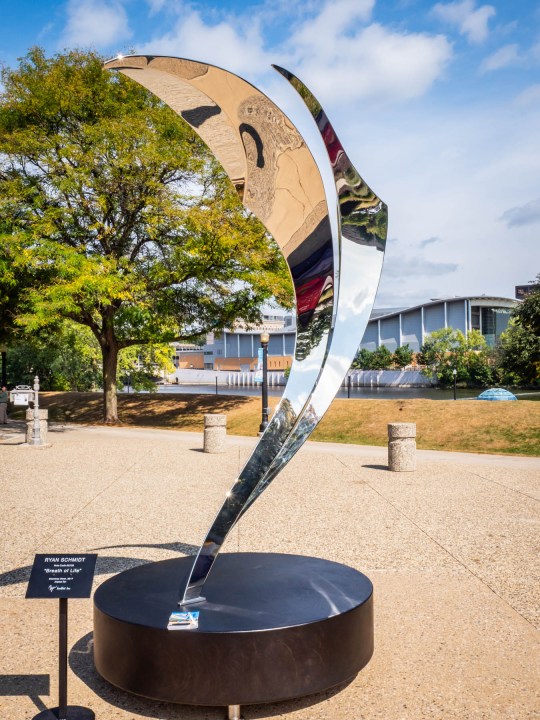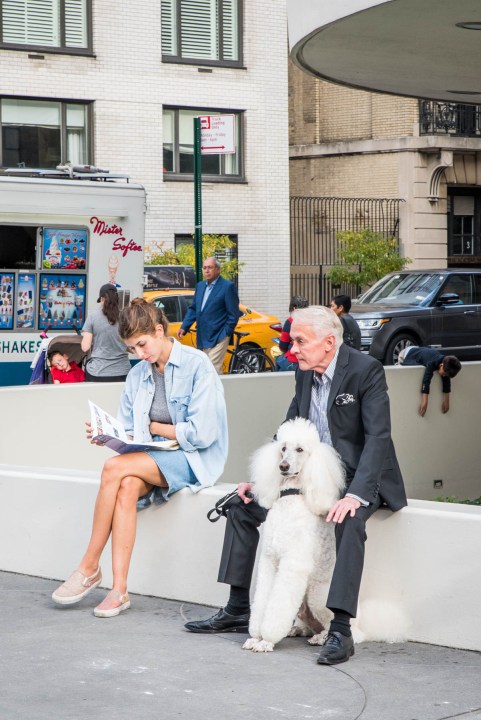We’ve been having a really, really long summer in Michigan. Lots of humidity, lots of warm temperatures and lots of sun. Last weekend, I shot for seven hours outdoors over the course of Saturday and Sunday. And while it took several bottles of water to keep me cool, keeping the strong highlights out of my photographs was a bit easier.
By utilizing the sunny 16 rule, you can get great photographs because getting the right exposure is easy with the hot sun beating down on you.
What’s the sunny 16 rule?
While using an incident light meter will ultimately get you perfectly-exposed photographs, using the sunny 16 rule is the next best thing. It’s simple, really — set your camera’s aperture to f/16, and then choose an ISO to work with. The shutter speed is 1 over the ISO. If your ISO is set to 200, your shutter speed would be set to 1/200.

The reason this technique works so well is that on a bright, day with the sun shining in a cloudless sky the amount of light is always the same: f/16 with the shutter set at the reciprocal of the ISO on the camera. Always. This is also a great way to check that your incident meter is working accurately.
Working with other weather conditions
Living in Michigan, I know that sky conditions change rapidly. One minute it can be sunny, the next there can be several clouds overhead. The weather forecast might say one thing, but the other side of town might have some very different weather conditions.
You can use the meaning behind the sunny 16 rule and apply it to these conditions too. For the opening photograph in this article, which was taken during a workshop with instructor Steve Brokaw, I chose to use an aperture of f/11, a shutter speed of 1/125 with the ISO 125 as there were some clouds overhead. The extra stop of light made up for the light lost on the light cloud cover. I did the same thing with the photograph below, taken in New York City.

Customizing the sunny 16 rule
Using the sunny 16 rule, you can get photographs that are exposed properly. Here’s a question, “what if you’re in a situation where you want to open up your aperture, say, for an environmental portrait?”
For example, the starting point is ISO 200, the shutter is at 1/200 and the aperture is f16. I decide to use an aperture of f/4 to blur the background. f/4.0 is a 4-stop brighter difference from f/16. Therefore my shutter speed has to double in speed four times — 1/200 to 1/400 is the first stop. 1/400 to 1/800 is the second stop. 1/800 to 1/1600 is the third stop. The fourth stop makes the shutter speed 1/3200 of a second for f/4.0. If I wanted the aperture to be even wider, say at f/2.8 for that nice portrait with great background bokeh, I’d have to move the shutter speed up to with 1/6400.
But my camera’s meter says something else?!
There’s a bunch of science behind this, but to put it simply, a reflected light meter like the one found in our cameras is easily tricked. This can happen if you’re shooting into a light or with a very dark background. It can even be something as simple as a different shade of clothing. It’s why it’s important to not trust your camera’s meter 100 percent of the time, and know the science behind getting the perfectly exposed shot if it’s wrong. Outside, the sunny 16 rule is a great starting place.
Is this a must-follow rule?
Simply put, no. Think of sunny 16 as a starting point, and then go from there. You might have some situations, like super reflective metal where it’s so bright you might need to bump your aperture down one full stop smaller, to f/22.
In the long run, your decision has to be determined by the type of photograph you’re shooting, and the creative look you’re going for. If you want a lot of depth of field in your outdoor portrait, having a f/16 aperture is just the ticket. Soft fuzzy backgrounds will require you to customize the rule as mentioned above. That’s when a light meter like the Illuminati comes in really handy as explained in this article.
If you’re wanting to get the exposure just right — which is great for street photography, an outdoor event or photography in general (even weddings) — then the f/16 rule is always a great place to start. Learn more about the Illuminati meter and how to get one here.
Tell your story with the second annual Visual Storytelling Conference!
Experience four days of interactive, online training sessions featuring a range of educational content with experienced photographers and content creators. This free event kicks off with a series of technical boot camps to build essential skills, followed by live, online sessions on photography, video, business and social media. Join live from March 10-13, 2022!
